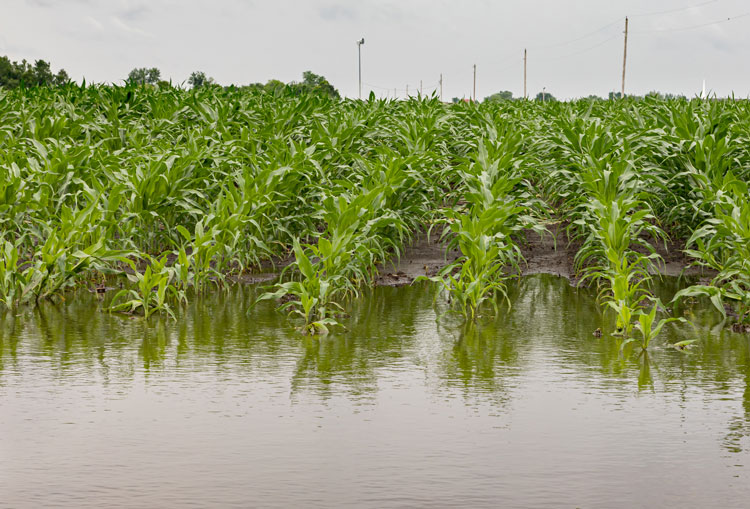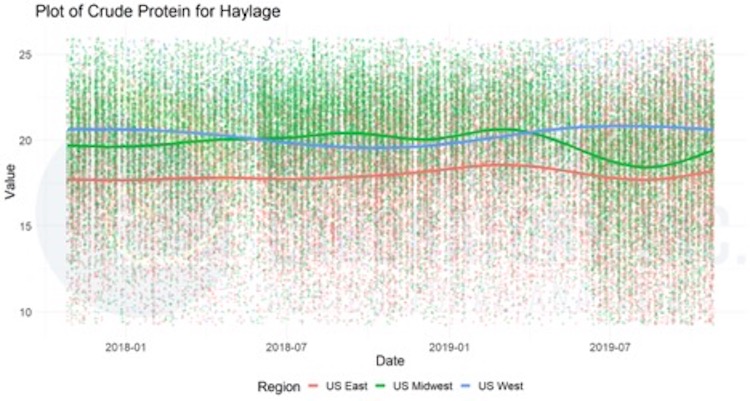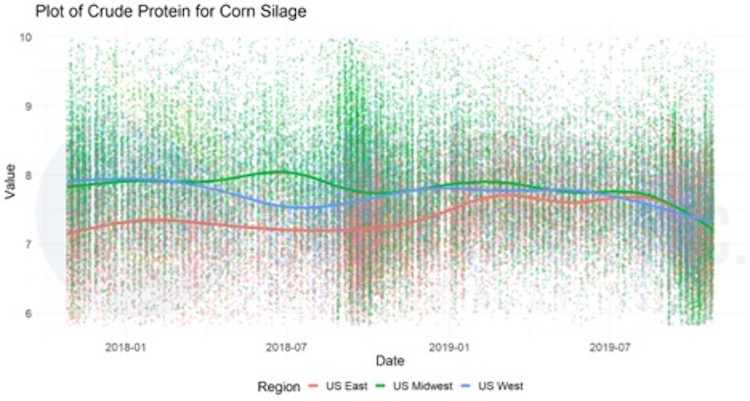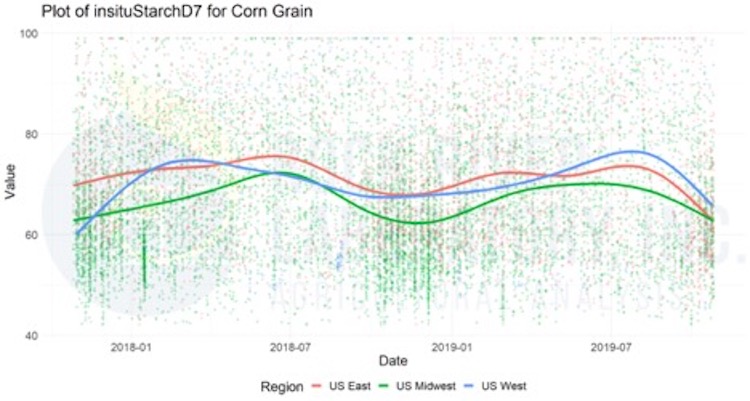
Just like your teenager who turns 16 and gets his or her driver's license, nitrogen in soil is mobile. Nitrogen (N) is known to move readily with water, especially with N applied as fertilizer or manure. Now reflect back upon what many farms experienced through the growing season in 2019 — unprecedented rain and water. Did soil N levels, available for crops, wash away with the rainfall?
The rainfall has had a far-reaching impact on crop quality, with the most recognizable effects tied to delayed or prevented planting scenarios and delayed harvest in both hay and silage crops. Less recognizable effects have been recognized in greater ear and stalk rot incidence, increased wild yeast levels, and lighter test weight corn for many. The lighter test weight corn could tie back to lesser growing degree days, less ability to reach physiological maturity, and less protein accumulation in the grain and plant.
Hay and corn crop crude protein (CP) levels are perhaps lesser yet recognized effects tied to growing conditions. Earlier this year, we noticed CP trending down in haylage crops and didn’t think much of this. However, back to the initial point — growing conditions likely contributed to this trend, which is clearly visible in Figure 1 for midwestern U.S. farms (green trend line) and slightly evident for eastern U.S. farms (red trend line). The mean CP appears to be down 1 or 2 units relative to the prior crop year. At 10 pounds dry matter intake for haylage, this equates to roughly one-third pound soybean meal equivalent.
Figure 1: Crude protein (% DM) for alfalfa and grass haylage samples for western (blue), midwestern (green), and eastern (red) U.S. farms, analyzed by Rock River Laboratory since late 2017.

Compounding the curious CP observations, crude protein levels in the new crop corn silage are also substantially down relative to old crop. This trend, visible in Figure 2, is now evident across the U.S., which complicates interpretation; however, Mother Nature is clearly at play. My hypothesis is that plant available N decreased as substantial rainfall through the season depleted soil N reserves. The 2019 crop may be down 0.5 units in CP; at 20 pounds dry matter intake, this would equate to roughly 0.2 pound of soybean meal equivalent. Combine the haylage and corn silage CP levels together, and many are likely looking to add about 1/2 pound more soybean meal to diets to offset the lesser CP.
Figure 2: Crude protein (% DM) for corn silage samples for western (blue), midwestern (green), and eastern (red) U.S. farms, analyzed by Rock River Laboratory since late 2017.

While adding more protein to the diet is not a good thing, greater corn silage CP is also not necessarily ideal. Pat Hoffman has taught that more protein in grain and silage tends to equate to harder grain and lesser starch digestibility. Corn plants readily take up soil N and build stronger protein in the kernels, hardening the vitreous endosperm. Thus, lesser N following excessive rainfall may equate to greater rumen starch digestibility. There may be a hidden benefit to lesser CP in corn silage or grain.
We are early yet in assessing rumen starch digestion potential for this year’s corn crop; however, Figure 3 offers current view for corn grain samples analyzed by Rock River Laboratory. The new crop cluster on the right-hand side of the graphic may be 5 to 10 units greater than a similar time period last year. This observation would be logical relative to lesser CP in silage and lighter test weight corn recognized by many.
Figure 3: Rumen starch digestibility measures for corn grain samples for western (blue), midwestern (green), and eastern (red) U.S. farms, analyzed by Rock River Laboratory since late 2017.

These observations present a unique opportunity to bring your nutritionist and agronomist together for discussion. Ask your agronomist for their observations and thoughts. What are your soil N test results relative to the observations discussed here? Ask your nutritionist how corn grain and silage starch digestibility for 2019 crop is trending for your farm and what impact it can have on your diet. A 5-unit gain in rumen starch digestibility can equate to substantial milk and feed conversion gains for your herd.








